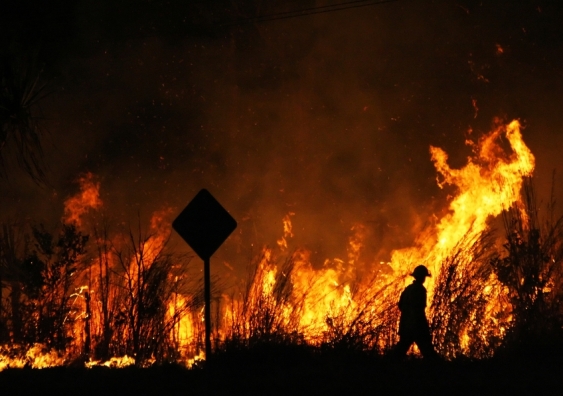Beyond Compliance: Enhancing Residential Or Commercial Property Security with a Thorough BAL Report Analysis
Beyond Compliance: Enhancing Residential Or Commercial Property Security with a Thorough BAL Report Analysis
Blog Article
Exactly How BAL Record Impacts Bush Fire Security Measures
In the realm of bush fire defense, the Building Strike Level (BAL) record stands as a vital device that considerably influences the security and strength of residential properties in fire-prone locations - BAL Report. The impact of a BAL evaluation expands much beyond plain documents; it functions as the foundation for determining the proper building and construction standards and fire protection measures required to minimize the threats posed by bushfires. As neighborhoods come to grips with significantly extreme fire periods, understanding how the BAL report shapes these protective steps becomes paramount for policymakers, property owners, and contractors alike
Comprehending the Bushfire Assault Level

Relevance of BAL Record Analysis

In Addition, the BAL report evaluation offers as a fundamental action in adhering to legal responsibilities and needs related to bushfire protection. Regional councils and authorities often mandate the submission of a BAL record as component of the planning and structure authorization procedure to guarantee that residential or commercial properties are properly protected versus bushfire threats. Falling short to conduct a detailed BAL record evaluation can cause inadequate security measures, leaving residential properties prone to ravaging bushfire events.
Building Criteria Based on BAL
A comprehensive understanding of the Bushfire Attack Degree (BAL) makes it possible for residential property owners to implement construction criteria customized to their details threat account. Building standards based upon BAL are crucial in reducing the impact of bushfires on homes. The BAL score categorizes the possible danger a residential property deals with throughout a bushfire on a range from BAL-Low to BAL-FZ (Flame Area) Each BAL degree represents certain building demands detailed in the Australian Conventional AS3959-2018 Building And Construction of Buildings in Bushfire-Prone Areas. Homes classified as BAL-Low might only require basic measures such as removing particles and maintaining gardens, while those in greater BAL categories need more durable measures like cinder displays, fireproof materials, and sealed home windows. Abiding by these building requirements not just enhances the structural strength of the residential or commercial property yet likewise enhances the overall safety and security of residents throughout a bushfire occasion. Consequently, building owners need to meticulously consider their BAL rating and follow the corresponding building criteria to adequately protect their homes and residents.
Applying Fire Security Procedures
With the structure of building standards based upon Bushfire Assault Level (BAL) in position, the emphasis now shifts in the direction of the practical implementation of fire security procedures to fortify buildings versus bushfire risks. Applying fire security measures involves a mix of passive and energetic strategies to improve the resilience of structures in bushfire-prone areas. Easy procedures consist of making use of fire-resistant structure products, mounting ember guards on vents, sealing gaps in roofing systems and walls, and keeping a clear room around the building without combustible greenery. Energetic actions include having firefighting tools readily available, such as hose pipes and water pumps, in addition to developing a defendable room see post around the home by clearing greenery and having a properly maintained yard. In addition, developing an evacuation plan and ensuring all locals know emergency treatments are critical components of efficient fire defense steps. By integrating both passive and energetic strategies, buildings can considerably lower their vulnerability to bushfire occurrences and enhance the security of owners.
Shielding Residences Versus Bushfires
Efficiently securing homes versus the devastating effects of bushfires calls for a aggressive and extensive strategy to fire security actions. House owners residing in bushfire-prone areas have to prioritize the execution of different strategies to improve their home's strength versus wildfires. One basic aspect is producing a defensible room around the home by maintaining a clear area free of combustible products. This includes routinely cutting vegetation, eliminating dead plants, and ensuring a risk-free distance between trees and structures. Setting up fireproof roof products can likewise dramatically lower the threat of cinder assaults and straight fire contact. Furthermore, sealing vents and voids to protect against cinder invasion, in addition to integrating fireproof doors and home windows, can aid strengthen the home's protection versus bushfires. Purchasing a trustworthy water resource, such as a properly maintained lawn sprinkler system or a devoted water storage tank, is critical for supplying water during fire emergencies - BAL Report. By embracing an aggressive position and integrating these safety steps, property owners can considerably increase their opportunities of protecting their homes versus bushfires.
Final Thought
In verdict, the Bushfire Strike Level (BAL) record plays an important role in establishing the required defense procedures versus bushfires. Executing fire protection actions based on the BAL report is crucial in guarding residential properties from potential bushfire threats.
In evaluating bushfire threat to properties, understanding the Bushfire Attack Level (BAL) is an important part for applying effective protection measures. In general, a clear understanding of the Bushfire Assault Level is necessary for applying ample protection measures and mitigating the impact of bushfires on buildings.

Report this page